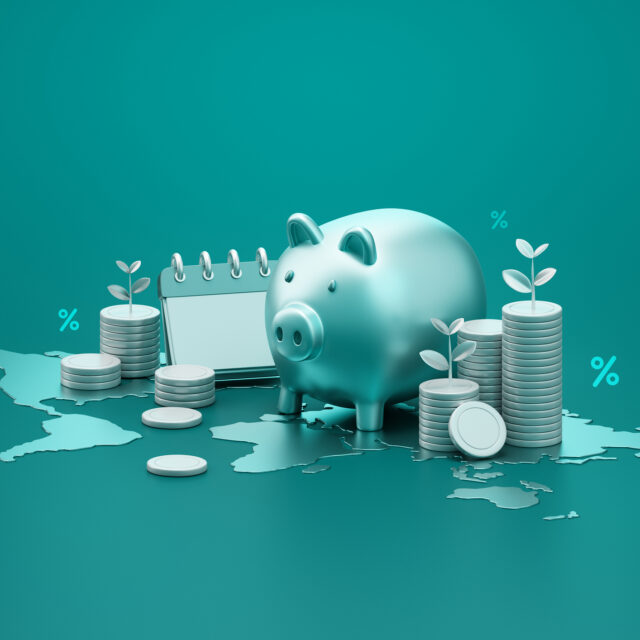2023 Looks To Be A Year Of Low Growth and Persistent Inflation
The conflict in Ukraine, with resultant high prices and uncertainty, means 2023 is going to be a year of little growth in the global economies.

Russia’s brutal invasion of Ukraine in February of last year, and the resultant conflict, made for a grim 2022 for the advanced (and developing) economies, though nothing compared with the horrors that the Ukrainians have suffered.
The war directly affected the advanced economies by leading to higher energy and food prices and increasing geo-political uncertainty. The high inflation that resulted from these price increase led to rapid monetary tightening. Real disposable income has fallen leading households to cut back on their consumption.
As a result, 2023 is going to be a year of little growth. Currently, NIESR expects growth in OECD economies in 2023 to be 0.8%, much lower than the 3% registered in 2022. Indeed, we forecast that recessions or, at least, recessionary economic conditions will occur in some countries, including Germany.
Against that backdrop, financial market uncertainty – as measured by the Chicago Board of Exchange Market Volatility Index (VIX) – was generally high throughout 2022. This was not helped by the uncertainty created by chancellor Kwarteng’s ‘mini budget’ on 23 September.
However, since October of last year the VIX has fallen to a level around its 20-year average, suggesting that although the 2023 outlook is not positive, the financial markets are less uncertain.
High inflation
Leaving aside the challenge posed by low growth in 2023, the persistently high inflation resulting from the war poses an ongoing challenge for central banks. Inflation overshot market expectations throughout 2022 – averaging around 11% across OECD countries – as the war led to sharp rises in food and energy prices.
The bad news is that it is likely to remain high in advanced economies in 2023. NIESR’s forecast for OECD inflation in 2023 is now 8.5%. On the bright side, headline inflation has now likely passed its peak in several advanced economies. The key determinant of whether this will be the case is what has happened and will happen to energy prices.
Russia’s invasion of Ukraine, not helped by problems with nuclear plants in France and a severe drought affecting hydro-electric generation, caused gas prices in Europe to rise to a peak of just under 350 euros per megawatt hour in August of last year. Since then, the advanced European countries have been able to substitute liquified natural gas for Russian gas and have also achieved substantial reductions in energy demand, helped by a particularly mild winter.
The result has been a significant fall in the spot price of gas to just below 50 euros per megawatt hour and in gas futures prices. These falls should help bring headline inflation down. Of course, there are risks to this view from the possible intensification of Russia’s war in Ukraine and/or further increases in food and energy prices.
More worryingly, ‘core’ inflation has risen, as price pressures have broadened beyond food and energy, and may not have reached its peak. If this is the case, headline inflation could remain stubbornly high for a while yet, creating a challenging environment for central banks. The key questions for them will be when to stop tightening and, subsequently, when to start loosening?
Where will interest rates peak?
Over the past year advanced economy central banks (with the exception of the Bank of Japan) have pursued an aggressive tightening in monetary policy in response to the high inflation. Specifically, the US Federal Reserve (Fed) raised policy interest rates by 425 basis points and the European Central Bank (ECB) by 300 basis points and the financial markets currently expect a further tightening: 75 basis points more by the Fed and 150 basis points more by the ECB.
There is a risk that policymakers… will be tempted to reduce rates earlier this year
But given that the pace of tightening we have already seen is contributing to the slowdown in the pace of economic growth and inflation, it is possible that interest rates may peak at a lower level.
The next question, then, is when should rates start coming down? Given the uncertainties about the direction and duration of the war in Ukraine, energy and food prices, and the domestic responses to higher inflation across many countries, I think that monetary policymakers should look for a sustained fall in inflation before they consider reducing rates.
The financial markets are currently expecting advanced-economy central banks to start reducing rates in early 2024, reflecting the stubbornness in underlying inflation. But there is a risk that policymakers, worried about the perception of their being too slow to loosen policy, just as they were seen as having been too slow to tighten in 2021, will be tempted to reduce rates earlier this year, which we feel would be a mistake.
So, the outlook for 2023 is not good, remaining one of low growth and persistent inflation, and certainly not an environment where you would want to be a policymaker!


















